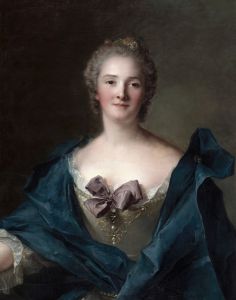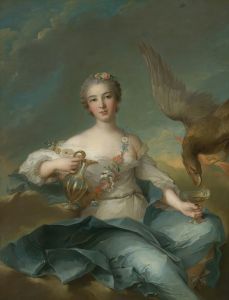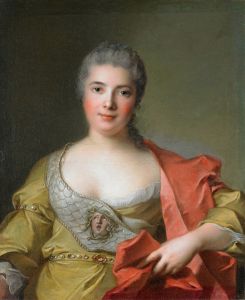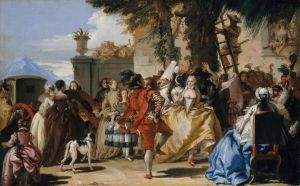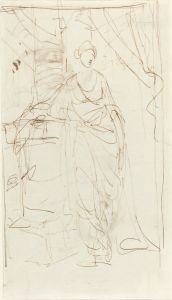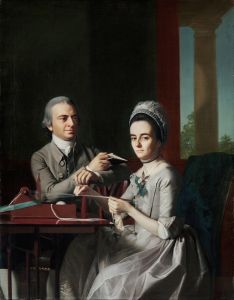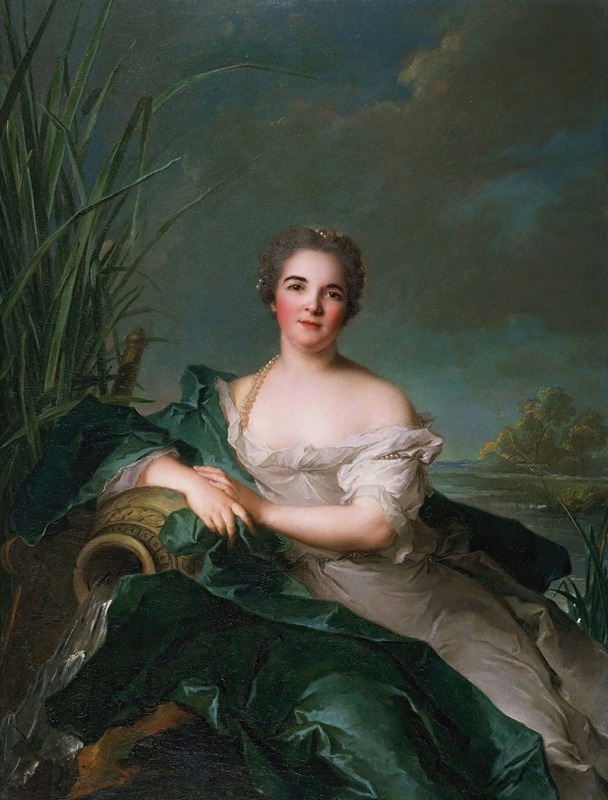
Madame de Flesselles
A hand-painted replica of Jean-Marc Nattier’s masterpiece Madame de Flesselles, meticulously crafted by professional artists to capture the true essence of the original. Each piece is created with museum-quality canvas and rare mineral pigments, carefully painted by experienced artists with delicate brushstrokes and rich, layered colors to perfectly recreate the texture of the original artwork. Unlike machine-printed reproductions, this hand-painted version brings the painting to life, infused with the artist’s emotions and skill in every stroke. Whether for personal collection or home decoration, it instantly elevates the artistic atmosphere of any space.
Jean-Marc Nattier was a prominent French Rococo painter known for his portraits of the nobility and aristocracy during the 18th century. One of his notable works is the portrait of Madame de Flesselles. This painting exemplifies Nattier's skill in capturing the elegance and grace of his subjects, as well as his ability to convey the luxurious textures of fabrics and the delicate nuances of facial expressions.
Madame de Flesselles, the subject of this portrait, was a member of the French aristocracy. While specific details about her life and status are not extensively documented, her depiction by Nattier suggests she was a woman of considerable social standing. Nattier's portraits often served to immortalize the beauty and refinement of his sitters, and Madame de Flesselles is no exception. The painting is characterized by its soft color palette, typical of Nattier's work, which often included pastel hues that enhanced the gentle and sophisticated aura of his subjects.
In the portrait, Madame de Flesselles is depicted in a sumptuous gown, indicative of the fashion of the time, with intricate detailing that showcases Nattier's attention to the textures and patterns of the fabric. Her pose is poised and elegant, a common feature in Nattier's portraits, which often aimed to highlight the grace and dignity of the sitter. The background of the painting is typically understated, drawing attention to the subject herself, while also providing a sense of depth and context to the composition.
Nattier's technique involved a meticulous approach to capturing the likeness of his subjects, often idealizing their features to align with the aesthetic preferences of the Rococo period. His use of light and shadow adds a three-dimensional quality to the portrait, bringing Madame de Flesselles to life on the canvas. The delicate rendering of her facial features and the subtle play of light across her skin are testament to Nattier's skill as a portraitist.
The portrait of Madame de Flesselles is a reflection of the cultural and artistic milieu of 18th-century France, a time when portraiture was a means of asserting social status and personal identity. Nattier's work is emblematic of the Rococo style, characterized by its elegance, lightness, and emphasis on beauty and ornamentation. His portraits were highly sought after by the French elite, and his ability to capture the essence of his subjects made him one of the most celebrated portraitists of his time.
Today, Jean-Marc Nattier's portraits, including that of Madame de Flesselles, are appreciated not only for their artistic merit but also for their historical significance. They offer a glimpse into the lives and fashions of the French aristocracy during a period of great cultural and social change. The portrait of Madame de Flesselles remains a testament to Nattier's enduring legacy as a master of Rococo portraiture.








